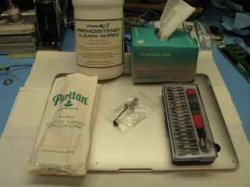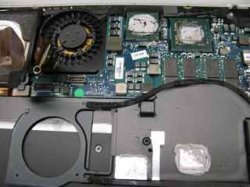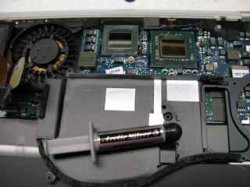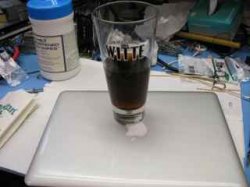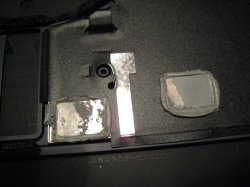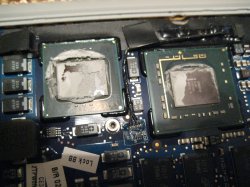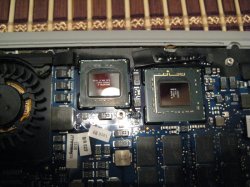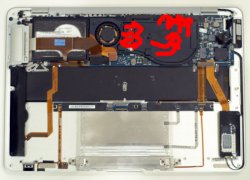First of all, let me start out by saying that I love Macbook Air.
Apple really knows how to attach emotion to the devices they make. It's something that no other company can do with their products.
If I had to pick one major fault for Macbook Air (1 USB port and lack of CD drive don't really bother me) is that it is noisy.
For a product that's designed mainly for light weight tasks, fan reving at 6200rpm after watching youtube or running screen saver is not favorable.
From browsing around the forum, I started to think that the source of heat issue on Air came from the way Apple applied thermal paste.
Poor application of thermal paste is a common practice for many companies and I guess it was also an oversight that Apple has made.
So I pop opened the back. I've done it by unscrewing screws in the back. It is probably one of the easiest laptops to open its innards.
I was greeted immediate with the heatsink. I was surprised. Heat sink is nothing but a thin plate of aluminum. No fins. No nothing.
I unscrewed the heatsink from the PCB.
And viola...
As you can see..they overused themal paste. This isn't a sandwich. It's a CPU core.


After a clean up.


Much better


Applied Arctic Silver 5..
Then I reassembled everything back up.
Ran youtube..and waited for the temperature to go up.
Result
When watching youtube video at full screen for 10 min.
Before
Core temp- 71 c
Fan- 6200rpm
After
Core temp- 63c
Fan- 4200rpm
Needless to say. HUGE improvement.
If you got a noisy Macbook Air...and if you got the gut to open up and reapply thermal paste..I'd say go for it.









